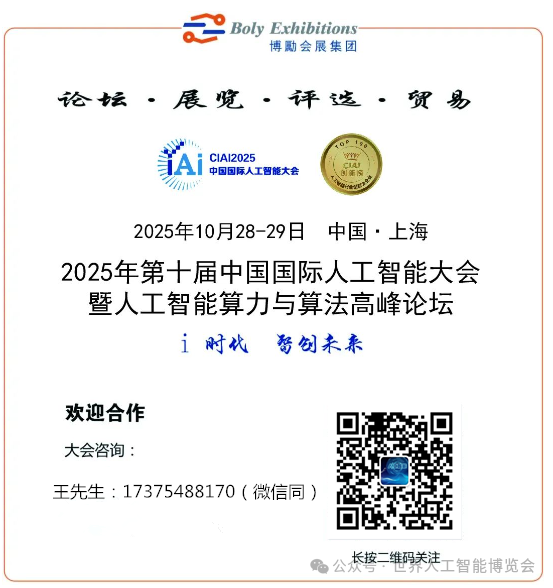
According to a report from China News Service in Guangzhou on June 7 (Reporter Sun Qiuxia), in recent years, Guangdong has introduced a series of policies to support the innovative development of the artificial intelligence and robotics industry. With a complete industrial chain and a strong industrial foundation, Guangdong is accelerating the creation of a global innovation hub for the artificial intelligence and robotics industry.
Data shows that by 2024, the scale of Guangdong’s core artificial intelligence industry will exceed 220 billion yuan (RMB, the same below), with more than 1,500 core enterprises in the province. In terms of robotics, Guangdong has formed a collaborative development pattern centered around Guangzhou, Shenzhen, Foshan, and Dongguan in the Pearl River Delta.

On April 5, the “AI Intelligent Robot Science Popularization Exhibition” was held at the Nanfeng International Convention and Exhibition Center in Guangzhou, where attendees interacted with a humanoid robot. (Photo by Chen Jiming, China News Service)
According to the global top 100 listed companies in the humanoid robot field released this year by the internationally renowned investment bank Morgan Stanley, Guangdong has 11 companies on the list, including GAC Group, Xiaopeng Motors, BYD, Tencent, UBTECH, and SUTENG.
He Xiaopeng, Chairman and CEO of Xiaopeng Motors, recently revealed in Guangzhou that the company’s annual investment in artificial intelligence (AI) research and development exceeds 4 billion yuan. In the next decade, they will build a fully self-developed AI ecosystem. He hopes that the humanoid robots produced by Xiaopeng Motors will be implemented in some scenarios in the second half of next year.
It is understood that Xiaopeng Motors’ humanoid robot IRON not only has a humanoid appearance and walking posture but also boasts a self-developed dexterous hand capable of performing high-precision tasks on factory assembly lines. He Xiaopeng stated, “The humanoid robot industry chain in China is accelerating its rise. Guangdong is strong in the automotive industry, and I believe the next trillion-level humanoid robot market will also emerge in Guangdong.”
Academician Ding Han from the Chinese Academy of Sciences pointed out that to achieve broad applications for humanoid robots, the core issues to address are intelligent computing brains, multi-dimensional visual perception, dexterous multi-fingered hands, and bipedal movement systems. Among these, dexterous multi-fingered hands are one of the most critical technologies for the industrialization of humanoid robots.
Shenzhen SUTENG Technology Co., Ltd. has developed the second-generation dexterous hand Papert 2.0, which has 20 degrees of freedom and a maximum load of 5 kilograms. It features 14 force sensors on the fingertips and palm, combined with a robotic arm and its control system, enabling it to perform delicate actions.
“We hope to combine the perception and operational capabilities of the dexterous hand to provide a hand-eye coordination solution. It can be applied in industrial scenarios to simulate human hand operations without modifying the infrastructure. Our dexterous hand is expected to go into mass production this year,” said Xie Tiandi, Marketing Director of Shenzhen SUTENG Technology Co., Ltd.
Paxini Perception Technology (Shenzhen) Co., Ltd. is a high-tech enterprise focused on tactile sensor technology and humanoid robot development. Its dexterous hand has been applied in medical, industrial, and other fields. The company’s CEO Xu Jincheng stated, “The Guangdong-Hong Kong-Macao Greater Bay Area provides enterprises not only with upstream and downstream industrial chains but also a large stage for us to perform. Here, we can manufacture humanoid robots without leaving our homes.”
Currently, Guangzhou is using the intelligent equipment and robotics industry as an engine to promote the transformation of traditional manufacturing towards high-end and intelligent development. Meanwhile, Shenzhen is demonstrating a leading position in the humanoid robot industry, drones, and new energy vehicles.
In supporting the development of artificial intelligence and robotics, Guangdong, Hong Kong, and Macao are collaborating in multiple fields. Recently, the three regions jointly initiated the establishment of the Guangdong Intelligent Industry Fund, with a target scale of 10 billion yuan, focusing on core technology research and development in AI large models, intelligent robots, and promoting vertical application scenarios such as intelligent manufacturing and smart cities, accelerating the transition of technology from the laboratory to industrialization.
Academician Zhang Xu from the Chinese Academy of Sciences and Director of the Guangdong Intelligent Science and Technology Research Institute stated that universities in Hong Kong and Macao, such as the Chinese University of Hong Kong and the Hong Kong Polytechnic University, have unique advantages in brain-machine interfaces and brain science research related to AI and robotics, while Guangdong has a strong industrial manufacturing foundation. The collaboration among the three regions has enormous potential. (End)

The International AI Network AI Industry Communication Group 6 (Note: Join AI Group)
